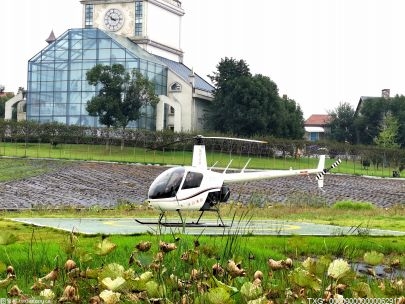学习必须与实干相结合。学习需要立刻行动,光说不做是没办法进步的。这次帅气的小编为您整理了9篇《英语语法及知识点》,希望能够对困扰您的问题有一定的启迪作用。
副词 什么是副词? 指出句中的副词: 1. You are standing near the camera.. Can you move a little farther? a little修饰副词“farther”表示程度 farther修饰动词“move”表示方式 2. Miss Long usually goes to school by bus. usually修饰动词goes,表示频度、频率 3. The two old passengers fell into the sea. Unfortunately, neither of them could swim. Unfortunately修饰整个句子 4. I won’t go with you. It’s much too hot today. much too修饰形容词,表示程度修饰形容词hot,修饰形容词
 (资料图片)
(资料图片)
一、非谓语动词
“非谓语动词”可分为动词不定式、动名词和分词。它在句子中的作用很多:除了不作谓语外,它可以充当主语、宾语、表语、定语、状语与复合宾语(主语补语或宾语补语).有些及物动词后面接不带to的不定式作复合宾语。这些动词归纳如下:一感(feel).二听(hear,listen to),三让(have,1et, make),四看(see,watCh,notice,observe).再加上help somebody(to)do something和美国英语look at somebody do somthing.还有“二让”属特殊:get somebody to do something与keep somebody doing.而有些及物动词后面接动名词(the -ing form)作宾语。这些动词归纳为一句话:Papa C makes friends.这是由如下动词的开头字母组成:permit,advise, practise,avoid,consider,mind, allow,keep,enjoy,suggest, finish,risk,imagine,escape,need,delay,stand(忍受).为了容易记住,也可以编成顺口溜:“允许完成练习,建议避免冒险,考虑延期逃跑,喜欢保持想象,需要反对忍受”。其相对应的动词依次是:permit/allow,finish,practise;
advise/suggest, avoid,risk:consider, delay, escape/miss; enjoy/appreciate, keep, imagine; need/want/require,mind. cant help/can’t stand.
二、复合句
1.学生最容易混淆的是定语从句与同位语从句的区别。
例如:A、The news that our team has won the match is true. (同位语从句)
B、The news that he told us surprised everybody here. (定语从句)
关键的区别在于连接或关系代词that:有意义的是定语,无意义的是同位。因为引导定语从句的that在从句中作主语或宾语,而引导同位语从句的`that只起到连接词的作用。
2.接着容易混淆的是引导定语从句的关系代词that与which:that之前是不定(代词)、序数(词)、(形容词)级:which之前是介词短语与逗号(非限制性).
例如:A、All that we have to do is to practise every day.
B、The first lesson that I learned will never be forgotten.
C、I have lost my pen,which I like very much.
D、The house in front of which there is a garden is my home.
三、It的用法
1.It除了代替人和物以外,还可以作形式主语。而真正的主语(不定式、动名词或从句)则放于谓语或表语之后。
例如:It is nor easy to finish the work in two days.
然而有少数表语之后接动名词作真正的主语。这些表语是:无助(no help)、无用(no use)、没好处(no good);工作(hard work)、费时(a waste of time)、又危险(a danger).
例如:A、It is no use crying over spilt milk.
B、It is a waste of time waiting for him.
2.It还可以作形式宾语。通常下列动词后面可接it作形式宾语:2f2tcjm(find,feel,think,take,consider,judge, make).
例如:A、He made it clear that he was not interested in this subject.
B、I think it no use arguing with him.
3.It用于强调句式。要强调句子的某一部分(主语、宾语、状语),可以把it当作先行词。这种句子的结构是:It is(was)+被强调部分+that(who)+句子的其余部分。
例如:A、It iS Professor Lin who teaches us English—(强调主语)
B、It was in Shanghai that l saw the film.—(强调状语)
C、It was in 1990 that I worked in the factory.(同上)
但要注意与定语从句的区别。
例如:D、It was 1990 when I worked in the factory.(定语从句)
在强调句式里,我们把强调结构It is(was)…that除去,句子还很完整。如例句C.而例句D就不能。
英语语法知识:It be time +(that)从句
在英语里,“It be time +(that)从句”是一个较为常用的句型,它表示“该做……的时候了”的意思。该句型属于主从复合句的一种;其主句部分为"It be time",从句部分的连词that可以省略。以下从三个方面简要谈谈这一句型。
一、time前面的修饰语
句型“It be time +(that)从句”通常暗示“有点迟了”,为了强调这一含义,可以在time的前面加形容词high.例如:
Its high time we started.
It is high time that more women ran the arts.
为了使语气得到进一步的加强,还可以在high的前面加certainly, more than等副词或词组:
It is certainly high time that we ordered dinner.
形容词full也可以加在time的前面,用来加强语气。例如:
Its full time you had a nice day.
It is full time that boy went to herding.
time前面还可以加about,这时句型所表达的意思是“早该……”。例如:
Its about time we started.
Its about time I settled down.
上面两例中的about可以用getting来代替,句意不变;这可以视为句型“It be time +(that)从句”的一种变体。
二、从句中的动词形式
在“(that)从句”中,动词形式通常是一般过去时。这是一种奇特而有趣的"语言现象,即用假设的过去时来代替实际的将来时。从英语史的角度来看,从句中的动词形式用过去时原是属虚拟语气;但从语言发展的观点来看,目前这种动词形式视为陈述语气比较合适。
著名语言学家夸克(R. Quirk)教授等人在1985年出版的《英语语法大全》一书中认为,“(that)从句”的动词形式一定要用“假设的过去时”。他们举了一例:Its time I was in bed.其实,动词形式除常用过去时外,也可以用其他时态和语态(用何种形式应视情况而定)。正如著名语言学家周海中教授在1988年发表的《探讨“It be time (that)…”句型》一文中所言:在现代英语里,“(that)从句”中的动词形式一般用过去时,这是基本规则;有时也可以用其他的动词形式,但应视为特殊用法。他在其文中列举了大量实例,用于论证和说明。
1.用were型虚拟语气。例如:
Its high time I were hence. (W. Shakespeare)
Its time I were gone. (A. Tennyson)
由于英语的发展,虚拟语气与陈述语气之间的区别正在逐渐消失。基于这种情况,虚拟语气的were也正在逐渐地代替陈述语气的was.
2.用be型虚拟语气。例如:
You reckon I be found anywhere with him, time he start belle ring. (W. Faulkner)
It is time that more of the research dollars now devoted to cure be diverted to finding new and more humane ways of curing that will make a cancer patients remaining years happier, more comfortable, and more productive. (Science, 1984, Vol. 5, No.7)
动词形式用be型虚拟语气是古英语的用法。目前,这一用法在英国英语中已“日薄西山”,而在美国英语中却有“东山再起”之势,但主要见于正式文体。
3.借助情态动词should
Its time this heart should be unmoved. (G. Byron)
It may be time that I should meet with some misfortune; but I hope it is not this. (C. Dickens)
上面用法主要见于文学作品,尤其是英国人写的。
4.用过去进行时。例如:
Its time we were leaving. (H. Maclnnes)
Its time we were getting home. (E. ONeil)
上面用法通常是一些表示位置转移的动作动词。
5.用一般现在时。例如:
It is high time that the U. S. realizes it cannot continue to hide its head in the sand, for the sand has started to blow. (Newsweek, Oct. 15, 1979)
“It is time that the burden of Reaganomics is shared by those in the upper-income groups,” 0Neill declared. (Time, Jun. 20, 1983)
上面用法主要见于美国英语,尤其在新闻文体里。这是一种值得关注的语言现象。
6.用完成时。例如:
Its time that reduction in force has finally hit the federal government also. (U. S. News and World Report, Mar. 15, 1982)
Fooleries! Pshaw! Its time youd done with fooleries. (G. Eliot)
上面用法也是一种值得关注的语言现象。
三、句型中的省略现象
在口语中,可以把句型“It be time +(that)从句”中的"It be"省略。例如:
High time we left. (J. Linsay)
Time we were going. (M. Hammonds)
在一定的上下语境中,也可以把句型中的“(that)从句”省略。例如:
This program goes in that direction, and I believe its time. (T. Wicker)
在特定的语境里,甚至还可以把句型中的"It be"和“(that)从句”都省掉,意义仍然是显豁的;不过,这时time前面要用high来修饰,其后面常跟副词too,该词只是用来加强语气,并无具体意义。例如:
Hes gone back to work.—— High time, too! (Longman Dictionary of English Idioms)
顺带一提,句型“It be the +序数词+ time +(that)从句”与句型“It be time +(that)从句”在结构上有点相似,但它们在句意上是完全不同的。前者也是主从复合句,当其主句的be用一般现在时,从句的动词形式通常为现在完成时,it可以用this来代替;当其主句的be用一般过去时,从句的动词形式通常为过去完成时,it可以用that 来代替。例如:
It/This is the first time (that) I have seen him.
It/That was the third time (that) I had been there.
初中英语语法:在习惯上只用作定语的形容词
习惯上只用作定语的形容词
这里说的定语指的是位于名词前作定语(即前置定语),而不是位于名词后作定语(即不用作后置定语),如main 是定语形容词,可以说mainthings,但不能说something main,因为后置定语从本质上说相当于表语,即something main 从本质上说相当于somethingthat is main。下面是几类典型的定语形容词:
一、表示相对关系的形容词
former 以前的,从前的 latter 后期的,后半的
inner 内部的,里面的 outer 外部的,外面的
upper 上部的,上游的 lower 下部的,下游的
elder 年岁较大的 eldest 最年长的
indoor 室内的,屋内的 outdoor 室外的,屋外的
inside 里面的,内侧的 outside 外面的,外侧的
upstairs 楼上的 downstairs 楼下的
【注】inside, outside, downstairs, upstairs等既可用作形容词也可用作副词。用于形容词时,只用于名词前作定语;若用作副词,则可用作表语(或名词后作定语)。
二、表示强调意义的形容词
mere 仅仅的 very 极端的"
outright 完全的 thorough 十足的
plain 完全的 complete 彻底的
pure 完全的 perfect 全然的
【注】若用于其他意义,有的可用作表语,如plain表示“明白的”、“普通的”等均可用作表语;perfect表示“完美的”、“完备的”、“准确的”等,也可用作表语。
三、表示度量的复合形容词
three-year-old 3岁大的 120-page 120页的
five-year 5年的
若用作表语或后置定语,则不用连字符:
She has a five-year-old son. 她有一个5岁的儿子。
Her son is five years old. 她的儿子五岁。
She has a son five years old. 她有一个5岁的孩子。
初中必备英语语法:八种宾语从句不省略that
引导宾语从句的that在下列情况下一般不省略:
1.宾语从句前有插入语。如:
We hope, on the contrary, that he will stay at home with us.恰恰相反,我们希望他和我们呆在家里。
2.有间接宾语时。如:
He told me that he was leaving for Japan. 他告诉我他要去日本。
3.that在与之并列的另一个宾语从句之后。如:
He said (that) the book was very interesting and that(不省略) all the childrenlike to read it.他说那本书很有趣,所有小孩都喜欢读。
4.在“it(形式宾语)+补语”之后时。如:
I think it necessary that he should stay here. 我们认为他有必要留在这里。
5.that从句单独回答问题时。如:
—What did he hear? 他听说了什么事?
—That Kate had passed the exam. (他听说)凯特考试及格了。
6.在except等介词后。如:
He has no special fault except that he smokes toomuch.他除了抽烟太多之外,没有什么特别的毛病。
7.位于句首时。如:
That our team will win, I believe. 我相信我们队会赢。
8.在较为正式或不常用的动词(如reply, object)后。如:
He replied that he disagreed. 他回答说他不同意。
初中英语语法:if与whether的区别
1.引导主语从句并在句首时不用if。如:
Whether we go there is not decided. 我们是否去那里还没决定。
2.引导表语从句时不用if。如:
The question is whether we can get there on time. 问题是我们能否按时到达那里。
3.引导同位语从句时不用if。如:
He asked me the question whether the work was worth doing.他问我这个问题,那项工作是否值得做。
4.在介词后引导宾语从句不用if。如:
I’m thinking about whether we’ll have a meeting. 我在考虑我们是否要开个会。
5.直接与not连用时不用if。如:
I don’t know whether or not you will go. 我不知道你是否去。
6.宾语从句置于句首时不用if。如:
Whether you have met George before, I can’t remember. 我不记得你以前是否见过乔治。
7.在discuss等之后时不用if。如:
We’re discussing whether we’ll go on a picnic. 我们在讨论是否要去野餐。
8.当用if会引起歧义时不用if。如:
Please let me know whether you are busy.请告诉我你是否忙。(若用if,还可理解为“如果你很忙,你就告诉我。”
一There be 句型
1.解释:“……地方有……”;
2.结构:
There be + 主语 + 地点状语
eg:There are some apples on the table.
3.考点:主谓一致
(1)be 后名词是单数名词或不可数名词,be 用 is 或者 was;后接可数名词复数则用 are 或were。
eg:
There is an apple in the fridge.
There is some milk in the fridge.
There isn’t any / is no money in the box.
There are many girls in the room.
(2)如果 be 后面是几个并列名词作主语,be 的单复数和最靠近的名词保持一致——就近原则。
eg:
There is a book and two pencils on the desk.
There are two pencils and a book on the desk.
二主系表
1.结构:主语+系动词+表语
eg:
He is good.
He is a good student.
2.系动词:
必须加上一个表明主语身份或状态的表语才能表达完整的意思,这类动词叫系动词。
常见系动词:
(1)be 动词——is/am/are/was/were
(2)感官动词——feel/look/sound/taste/smell
(3)表转变动词——get/grow/become/go
eg:
感官动词主系表——It looks perfect. 它看上去真完美。
表转变动词主系表——The sky grew dark./ It became dirty.
3.考点:系动词后面跟形容词
eg:
He looks at her happily.(happily 修饰 look at,look at 解释为看着,look 是实义动词)
He looks happy when he sees her.(look 不及物,这里没有跟介词,单独行动,翻译/为“看上去”,是系动词,后跟形容词。)
三主谓宾
1.结构:主语+谓语+宾语
主语:动作发出者;
谓语:动作本身(实义动词);
宾语:动作承受者
eg:I walk a bear. 我溜一只熊。
四主谓宾宾
结构:主语+谓语+宾语+宾语
双宾语:直接宾语(物);间接宾语(人)——物直人间
eg:
I give him the book.
I give the book to him.
谓语后跟间接宾语时,直接宾语前不需要介词;谓语后跟直接宾语时,间接宾语前加介词 to/for。
五主谓宾宾补
结构:主语+谓语+宾语+宾补
宾补:一个宾语不能完整表达出意思,需要加一个补充成分来补足宾语使句意完整。
eg:
He made me happy.
I keep the room tidy.
My mother saw me doing housework.
六能力检测走起
一星题
There___ not ____ milk in the cup on the table 。
A. are, many B. are , much
C. is ,many D. is ,much
2.How many ___ are there in the room ?
A. apple B. students
C. milk D. paper
3.There ____ pencil-box, two books and some flowers on the desk.
A. is a B. are some
C. has a D. have some
4.Yesterday was my birthday. My mother ____.
A. made a cake to me B. made a cake me
C. made for me a cake D. made me a cake
5.-Shall we go for a picnic in the park this Saturday?
-Oh, that _______ good.
A. feels B.looks
C smells D.sounds
两星题
1.There ____ a lot of good news in today"s newspaper.
A. is B. are
C. was D. were
2.Roses in bloom smell ____.
A. sweetly B. sweet
C. sweeten D. sweetness
翻译:(如有单词提示,请用提示单词)
1.我昨晚看见爸爸在工作。(并写出句型)
2.他变得很生气。(get)(并写出句型)
3.我给妈妈买了一本书。(通过变换宾语位置翻译出两句句子,并写出句型)
三星题
1.- Is this the last exam we have to take ? - No, but there ____ another test three months later from now.
A. will be going to B. is
C. will be D. has been
2.There ______ great changes in such kind of computers in the last few years.
A. is B. are
C. will be D. have been
3.There ________ a football match on TV this evening.
A. will have B. is going to be
C. has D. is going to have
4.Canned food does not go ____.
A. bad easily B. badly easy `
C. bad easy D. badly easily
5.。I will make your dream ____.
A. comes true B. to come true
C. coming truly D. come true
1.一般过去时表示过去某个时间发生的动作或存在的状态,常和表示过去的时间状语连用。一般过去时也表示过去经常或反复发生的动作感谢。
2.Be动词在一般过去时中的`变化: ⑴am 和is在一般过去时中变为was。(was not=wasnt) ⑵are在一般过去时中变为were。(were not=werent) ⑶带有was或were的句子,其否定、疑问的变化和is, am, are一样,即否定句在was或were后加not,一般疑问句把was或were调到句首。
3.句中没有be动词的一般过去时的句子 否定句:didnt +动词原形,如:Jim didnt go home yesterday. 一般疑问句:在句首加did,句子中的动词过去式变回原形。如:Did Jim go home yesterday? 特殊疑问句: ⑴疑问词+did+主语+动词原形?如: What did Jim do yesterday? ⑵疑问词当主语时:疑问词+动词过去式?如:Who went to home yesterday?
动词过去式变化规则:
1.一般在动词末尾加-ed,如:pull-pulled, cook-cooked
2.结尾是e加d,如:taste-tasted
3.末尾只有一个元音字母和一个辅音字母的重读闭音节,应双写末尾的辅音字母,再加-ed,如:stop-stopped
4.以“辅音字母+y”结尾的,变y为i, 再加-ed,如:study-studied
5.不规则动词过去式: am,is-was, are-were, do-did, see-saw, say-said, give-gave, get-got, go-went, come-came, have-had, eat-ate, take-took, run-ran, sing-sang, put-put, make-made, read-read, write-wrote, draw-drew, drink-drank, fly-flew, ride-rode, speak-spoke, sweep-swept, swim-swam, sit-sat
用固定的情态动词表示的虚拟语气
1.should +动词原形(有时省略should)
(1)用在动词如advise, command, demand, desire, insist, order, propose, recommend, request, require, suggest, urge等后的。宾语从句中。例如:
1)They requested that we (should) send a delegation to their country.
2)She urged that he write and accept the post.
(2)用在it is suggested, it is desired, it is required, it was ordered, it was proposed, it has been decided, it is necessary (essential, imperative, important, desirable) that等引出的主语从句中。例如:
1)It is desired that we (should) get everything ready by tonight.
2)It is necessary that the teacher (should) have a thorough knowledge of the subject he teaches.
(3)用在suggestion, motion, proposal, order, recommendation, plan, idea, requirement等引起的表语从句和同位语从句
例如:He put his coat over the child lest he should catch cold.
一、英语语句基本结构分析:
主谓宾结构:
主语:可以作主语的成分有名词(如boy),主格代词(如you),动词不定式,动名词等。主语一般在句首。注意名词单数形式常和冠词不分家!
谓语:谓语由动词构成,是英语时态、语态变化的主角,一般在主语之后。不及物动词(vi.)没有宾语,形成主谓结构,如:We come.
宾语:宾语位于及物动词之后,一般同主语构成一样,不同的是构成宾语的代词必须是‘代词宾格’,如:me,him,them等
例:The boy needs a pen.主语the boy,谓语needs(need的第三人称单数形式),宾语a pen.
主系表结构:
主语:同‘主谓宾’结构。
联系动词(Link verb):be动词(am,is,are,was,were,have been);其他联系动词如:become成为,turn变成,go变。其特点是联系动词与其后的表语没有动宾关系,表语多为形容词或副词,既,不可能是宾语。
表语:说明主语的状态、性质、等。可为形容词、副词、名词、代词、不定式、分词。当联系动词不是be,而其后是名词和代词时,多表达‘转变为’之意,注意与动宾关系的区别。
感官动词多可用作联系动词:look well/面色好,sound nice/听起来不错,feel good/感觉好,smell bad/难闻
例:Tom is a boy.(Tom是个男孩)/主语为Tom,系词为be动词的第三人称单数is,表语为a boy
There be 结构:
There be 表示‘存在有’。这里的there没有实际意义,不可与副词‘there那里’混淆。
此结构后跟名词,表示‘(存在)有某事物’
试比较:There is a boy there.(那儿有一个男孩。)/前一个there无实意,后一个there为副词‘那里’。
二、定语:定语是对名词或代词起修饰、限定作用的词、短语或句子,汉语中常用‘……的’表示。
定语通常位于被修饰的成分前。若修饰some,any,every,no构成的复合不定代词时,(如:something、nothing);或不定式、分词短语作定语、从句作定语时,则定语通常置后。副词用作定语时须放在名词之后。
形容词作定语:
The little boy needs a blue pen.(little修饰名词boy;blue修饰名词pen.)/小男孩需要一支兰色的钢笔。
Tom is a handsome boy./Tom是个英俊的男孩。
There is a good boy./有个乖男孩。
数词作定语相当于形容词:
Two boys need two pens./两个男孩需要两支钢笔。
The two boys are students./这两个男孩是学生。
There are two boys in the room./房间里有两个男孩。
代词或名词所有格作定语:
His boy needs Tom"s pen./他的男孩需要Tom的钢笔。
His name is Tom./他的名字是汤姆。
There are two boys of Toms there./那儿有Tom家的两个男孩。
介词短语作定语:
The boy in the classroom needs a pen of yours./教室里的男孩需要你的一支钢笔。
The boy in blue is Tom./穿兰色衣服的孩子是汤姆。
There are two boys of 9,and three of 10./有两个9岁的,三个10岁的男孩。
名词作定语:
The boy needs a ball pen./男孩需要一支圆珠笔。
It is a ball pen./这是一支圆珠笔。
There is only one ball pen in the pencil box./这铅笔盒里只有一支圆珠笔。
副词作定语:
The boy there needs a pen./那儿的男孩需要一支钢笔。
The best boy here is Tom./这里最棒的男孩是Tom。
不定式作定语:
The boy to write this letter needs a pen./写这封信的男孩需要一支钢笔。
The boy to write this letter is Tom./将要写这封信的男孩是汤姆。
There is nothing to do today./今天无事要做。
分词(短语)作定语:
The smiling boy needs a pen bought by his mother./那个微笑的男孩需要一支他妈妈买的钢笔。
The pen bought by her is made in China./她买的笔是中国产的。
There are five boys left./有五个留下的男孩。
定语从句:
The boy who is reading needs the pen which you bought yesterday./那个在阅读的男孩需要你昨天买的钢笔。
The boy you will know is Tom./你将认识的男孩叫汤姆。
There are five boys who will play the game./参加游戏的男孩有五个。
学好英语语法不仅能在考试中提高成绩,还能在以后的生活交流中提高语感和口语能力,能让你说出一句流畅的英语。
一、形式上不留任何痕迹
一般说来,句子中的某些成分被省略后,形式上不保留任何痕迹,只能从意义上来理解。如:
(1) Welcome to our school. 欢迎来我校。
(2) Make yourself at home. 请随便。
二、留下某一个表特征的词
1.如果句子中的不定式被省略,常保留不定式中的小品词to。如:
(1) —Will you please go shopping with me this afternoon?
今天下午同我一起去买东西好吗?
—I’d like to, but I have much work to do.
我倒想去,但是我有很多事情要做。
(2) —Will Mr. Brown come, too?
布朗先生回来吗?
—Yes. He promised to, but he doesn’t turn up yet.
是的`。她答应来,但现在还没有到。
但当不定式是be或动词的完成体时,be及have一般不能省略。如:
(1) —Will Bruce be a player for our team?
布鲁斯将会成为我们队的队员吗?
—He wants to be, but we won’t take him in.
他倒想,而我们不会接受他。
(2) —Has he finished reading the book?
他把书看完了吗?
—He hopes to have, but in fact he reads too slowly.
他倒希望看完了,而事实上她读得太慢了。
2.从句的谓语部分省略后,从句中的情态动词或助动词保留。如:
(1) He said he would do as much as he could to help us.
他说他要尽一切努力来帮助我们。
(2) When asked to dance, she said she couldn’t.
当请她跳舞时,她说她不会。
3.省略从句时,若从句为否定,则从句中的否定词not被保留。这样的主句谓语动词有:think, believe, guess, suppose, hope,be afraid, be sure 及连接副词:why, if。如:
(1) —Do you think he will come to see us?
你认为他回来看我们吗?
—I think not.
我认为不会。
(2) —Is it going to rain?
天会下雨吗?
—I’m afraid not.
恐怕不会。
(3) —Can you go to the concert with us this evening?
今天晚上能跟我们一起去听音乐演奏会吗?
—Why not.
为什么不呢?
三、用一个单词来代替被省略的成分
1.当从句或分句中的谓语动词省略时,有时须加一个助动词do合适的形式来代替。如
(1) Anyone can’t break the rules. If you do, you will sure be punished.
任何人也不能违反纪律,如果你违反了,你将肯定要受到惩罚。
(2) He was told not to go there alone at night, but he did.
人们告诉他夜晚不要单独一人去那儿,然而它却去了。
(3) —Do you like swimming?
你喜欢游泳吗?
—Yes, I do.
是的,我喜欢。
2.当整个从句被省略时,可用so来代替。这样的主句谓语动词有:think, believe, guess, suppose, hope, be及疑问副词why, how, if等。如:
(1) —Do you think the thief will be put into prison?
你认为那个贼会被打入监牢吗?
—Yes. I think so.
是的,我认为会。
(2) —Do you believe that he will come back from abroad?
你认为他会从国外回来吗?
—Yes. I believe so.
是的,我认为他会回来。
(3) —It is said that Mary got her arm broken.
据说玛丽把手臂弄断了。
—How so.
怎么会这样呢。
(4) —He must be in the classroom now.
他现在肯定在教室里。
—If so, let’s go to the classroom to see him.
如果她在教室里,我们就去那儿看他吧。
3.当从句为否定,而整个从句被省略时,可写为don’t…so, 也可只保留从句中的 not。这样的主句动词有:think, believe, suppose等。如:
(1) —Do you think he will change his idea?
你认为他会改变主意吗?
—No. I don’t think so.
不,我认为他不会。
(2) —Do you think English is difficult?
你认为英语难学吗?
—No. I don’t think so.
不,我认为不难学。
四、从句中的引导词省略后,主谓倒装
在虚拟条件句中含有were, should, had 时,可将 if 省略,同时将 were, should, had 提到 句首。如:
(1) Were I there, I would stop him doing that.
要是我在那儿,我就会阻止他那样做。
(2) Had he learnt English, he would be studying abroad.
要是他以前学过英语,他会正在国外学习。
(3) Should he like swimming, I couldn’t stop him.
要是他喜欢游泳,我可阻止他不了。
它山之石可以攻玉,以上就是掌知识为大家整理的9篇《英语语法及知识点》,您可以复制其中的精彩段落、语句,也可以下载DOC格式的文档以便编辑使用。
关键词:





Copyright 2015-2022 东方地质网 版权所有 备案号:沪ICP备2020036824号-8 联系邮箱:562 66 29@qq.com